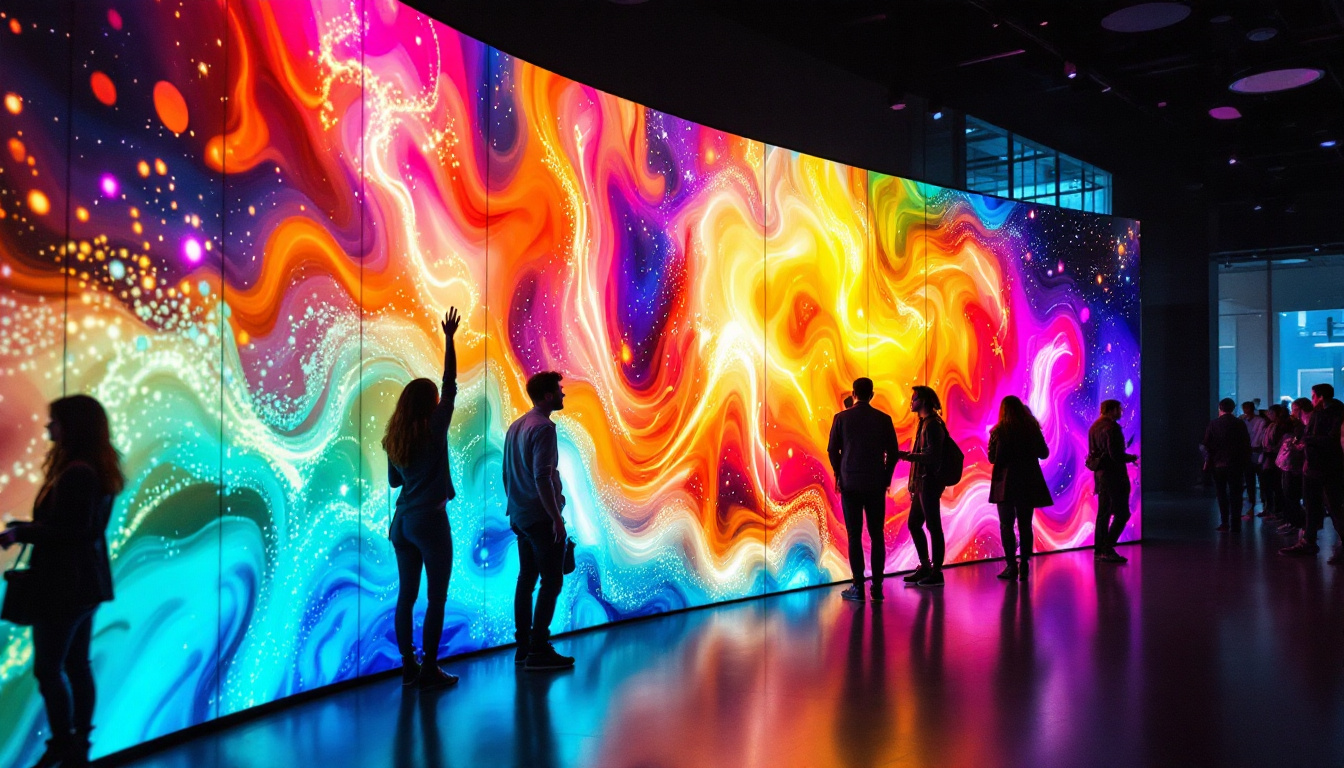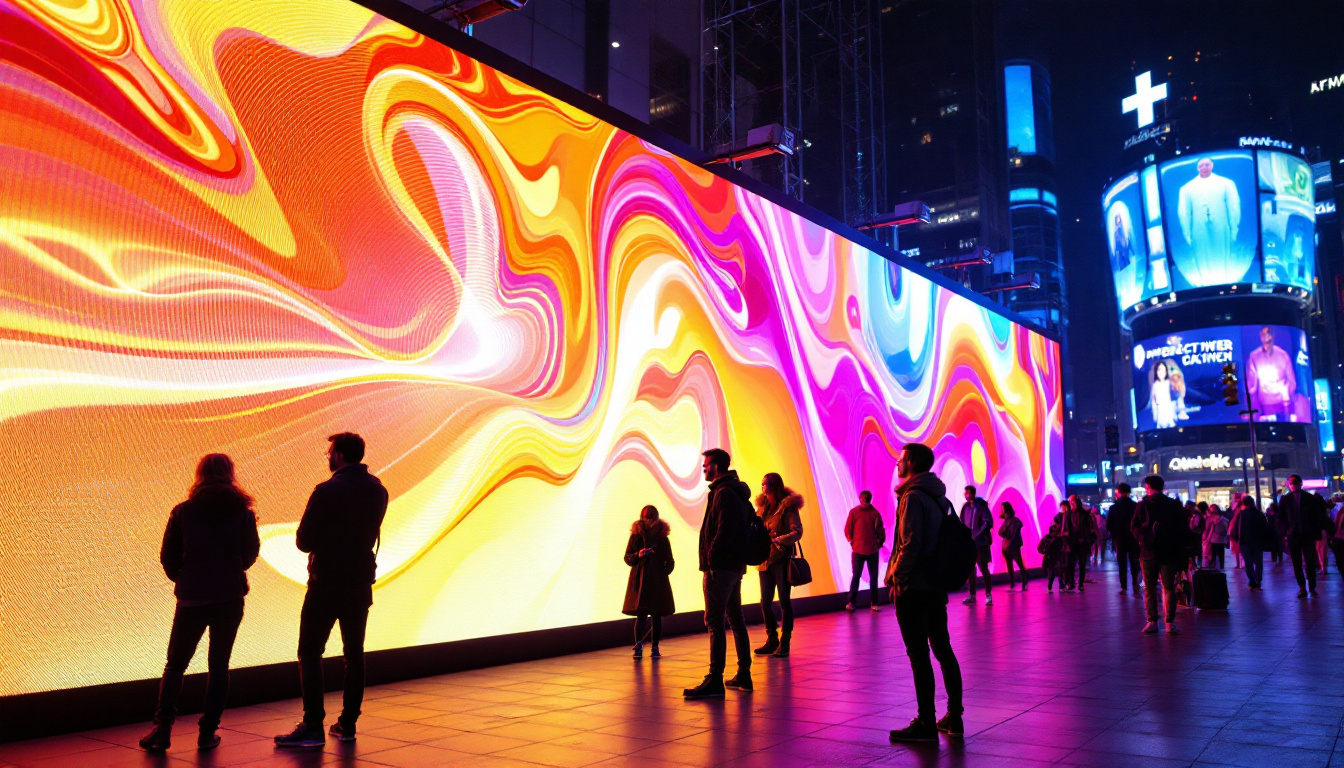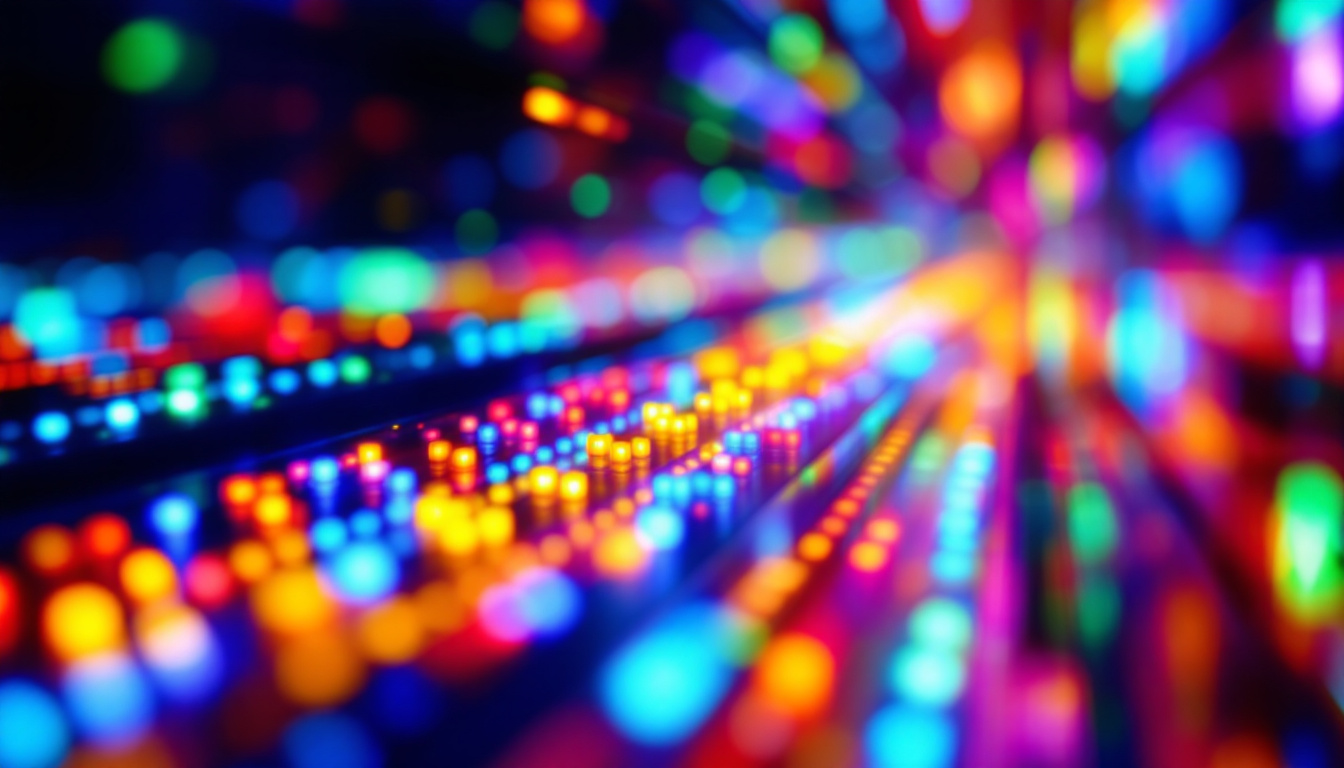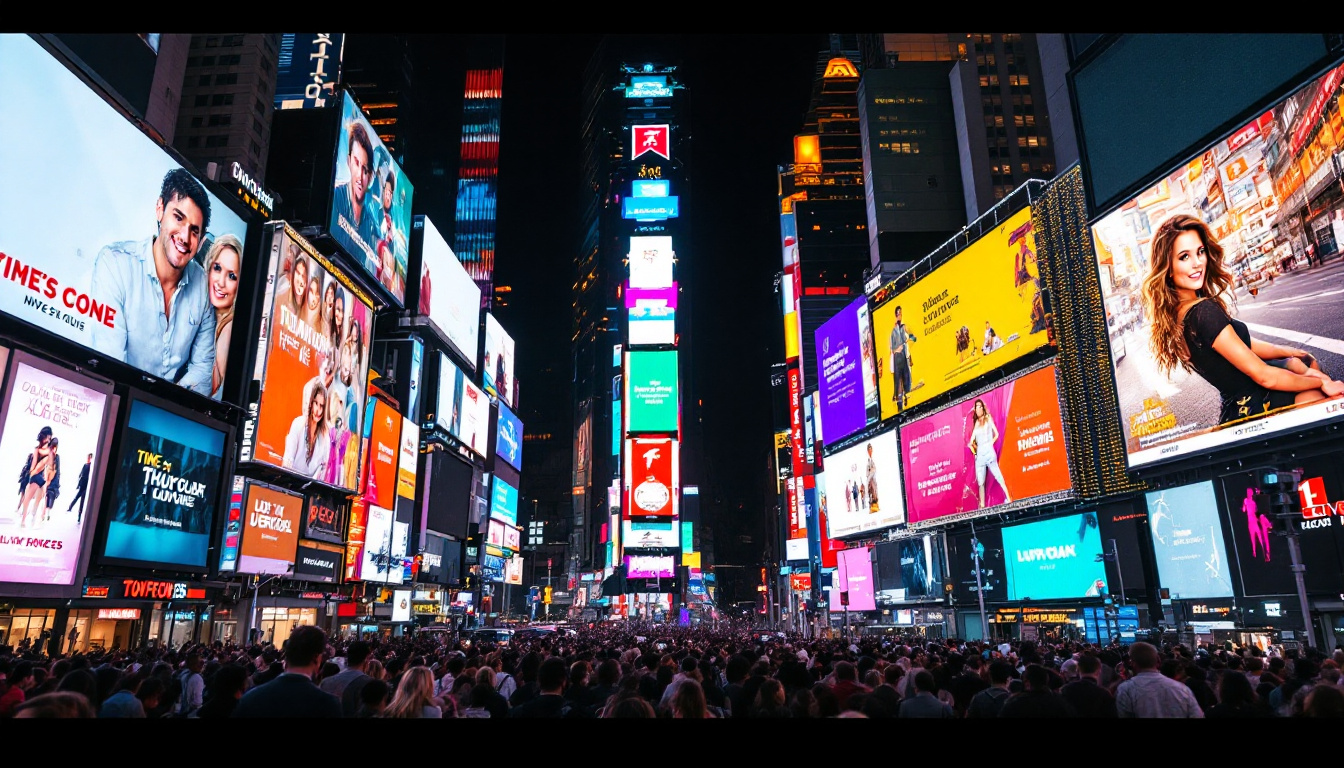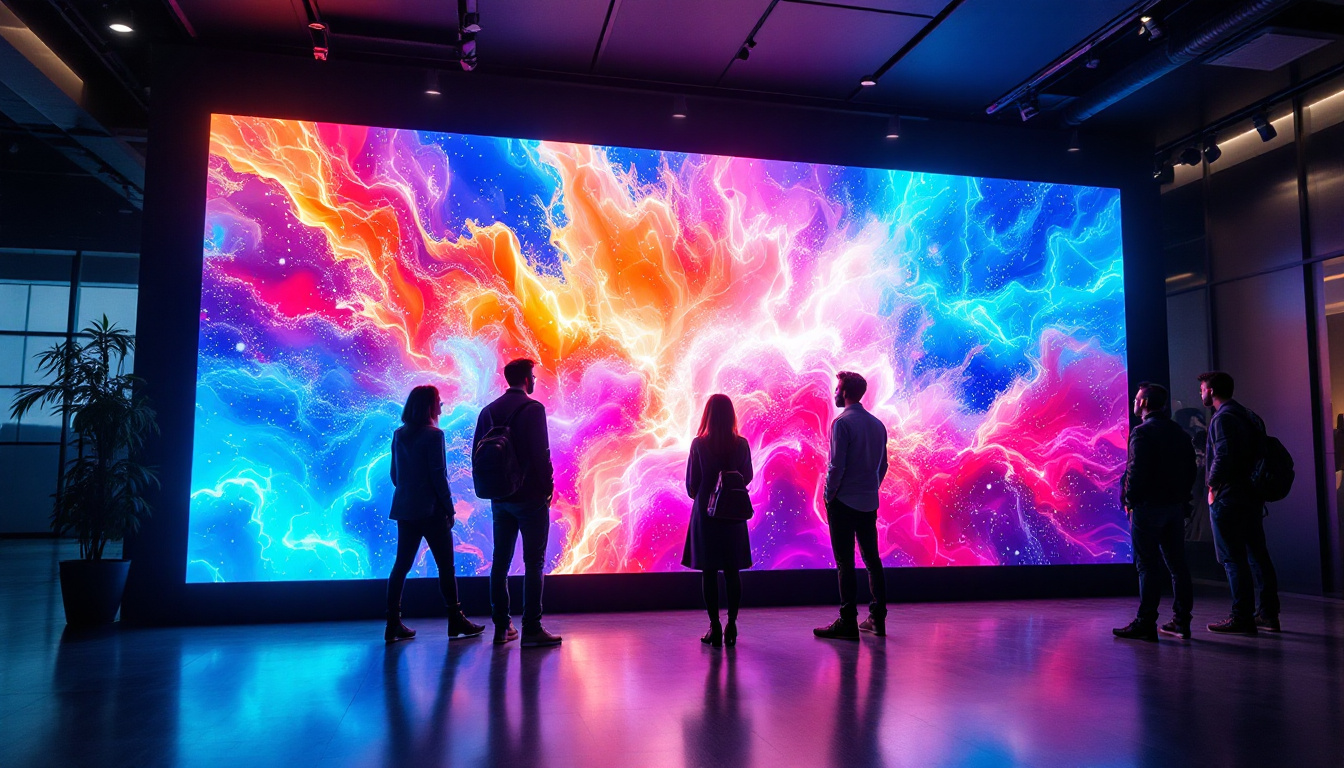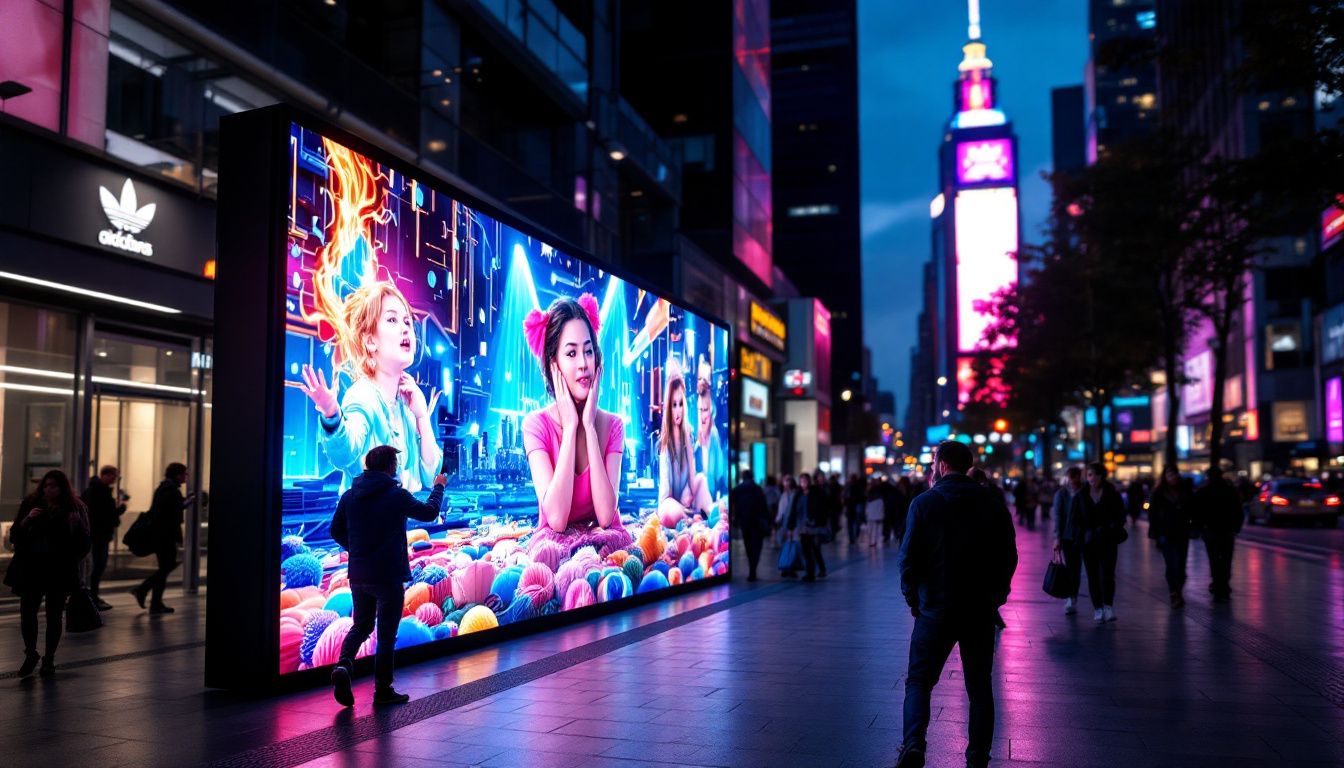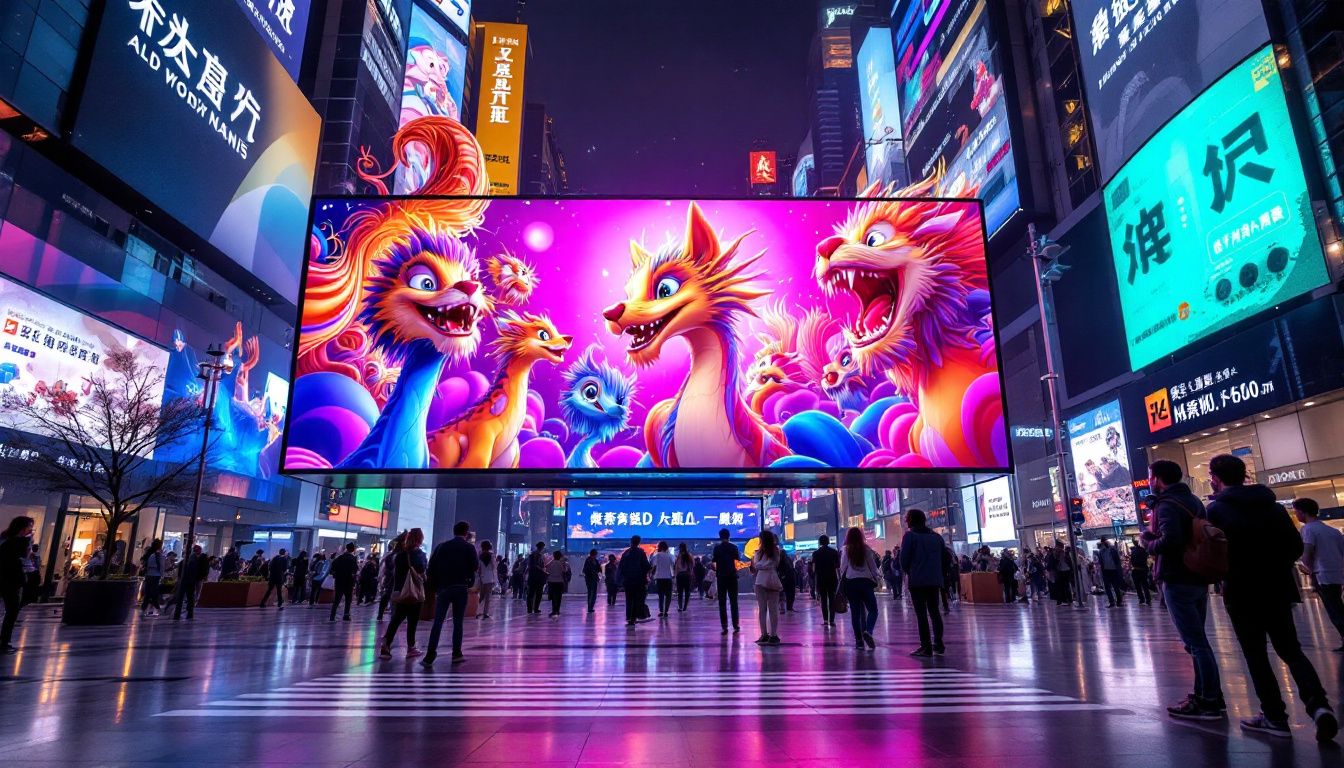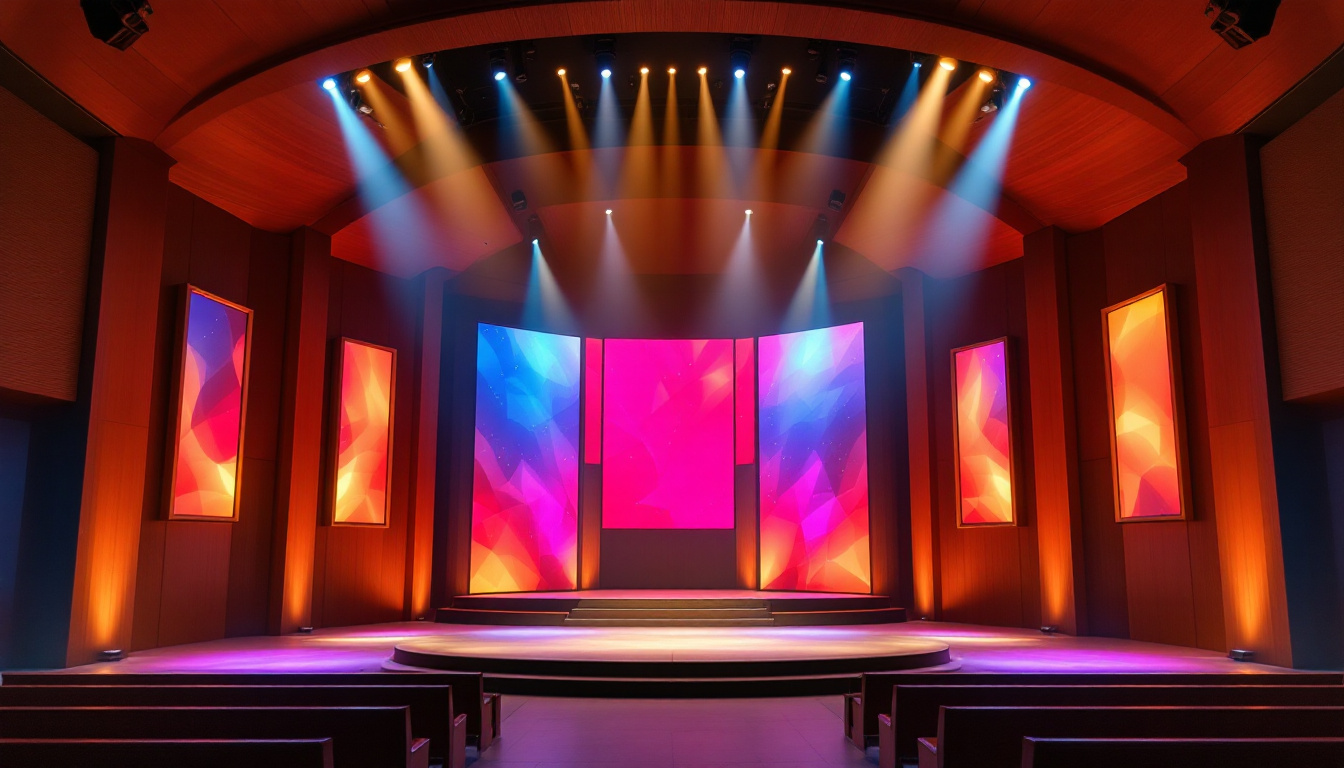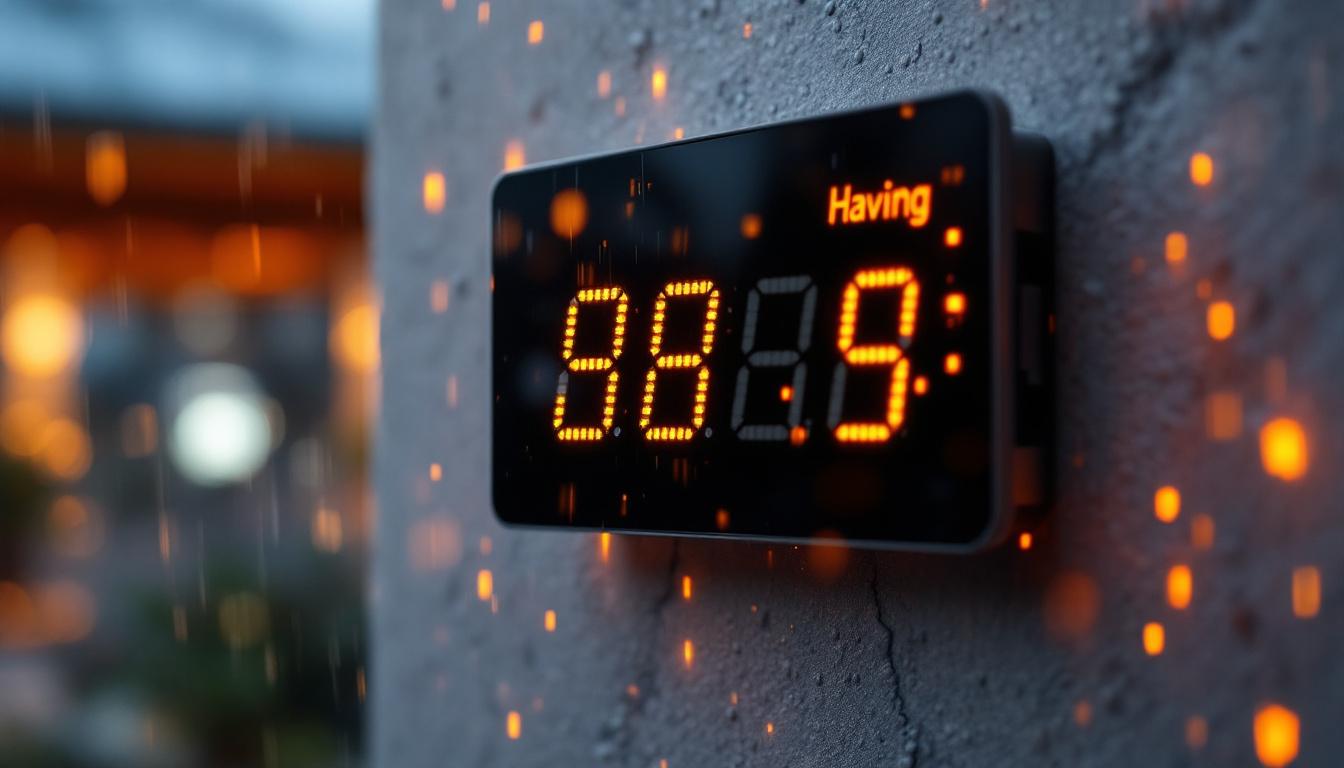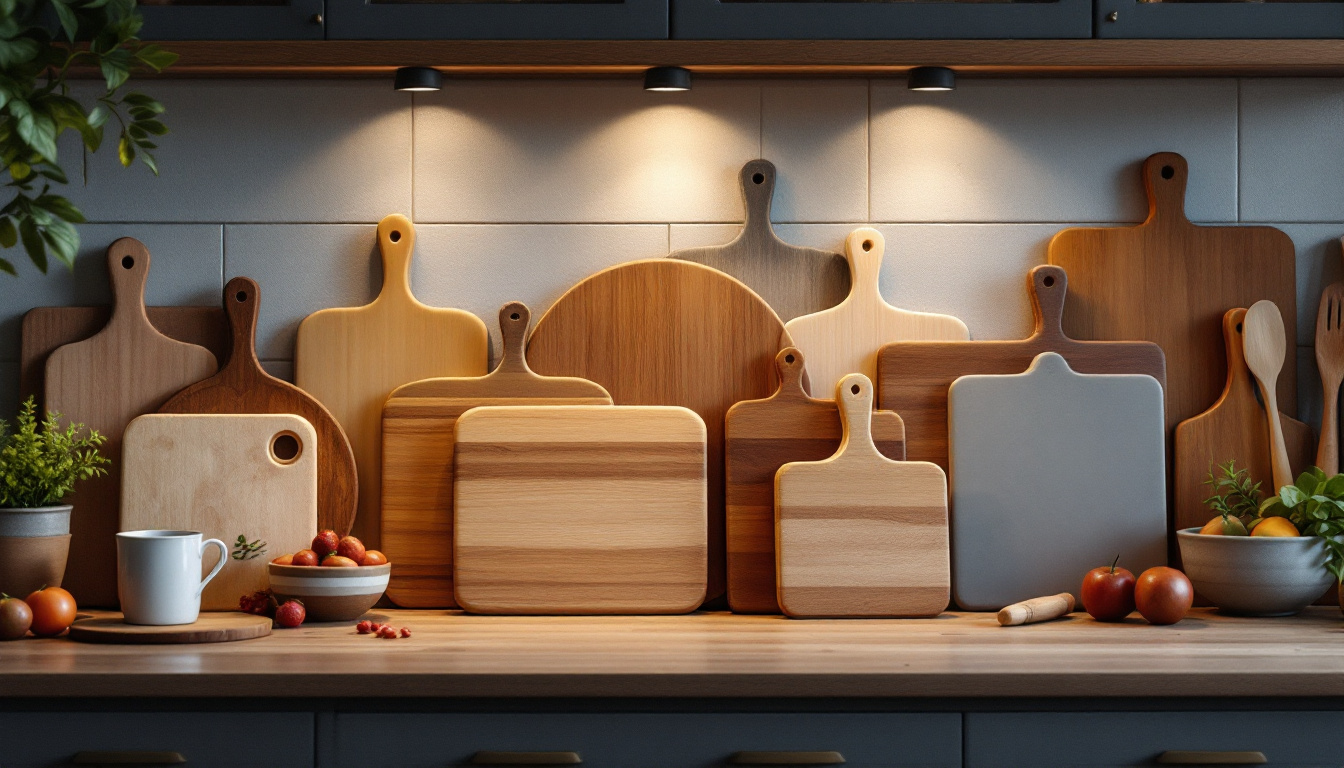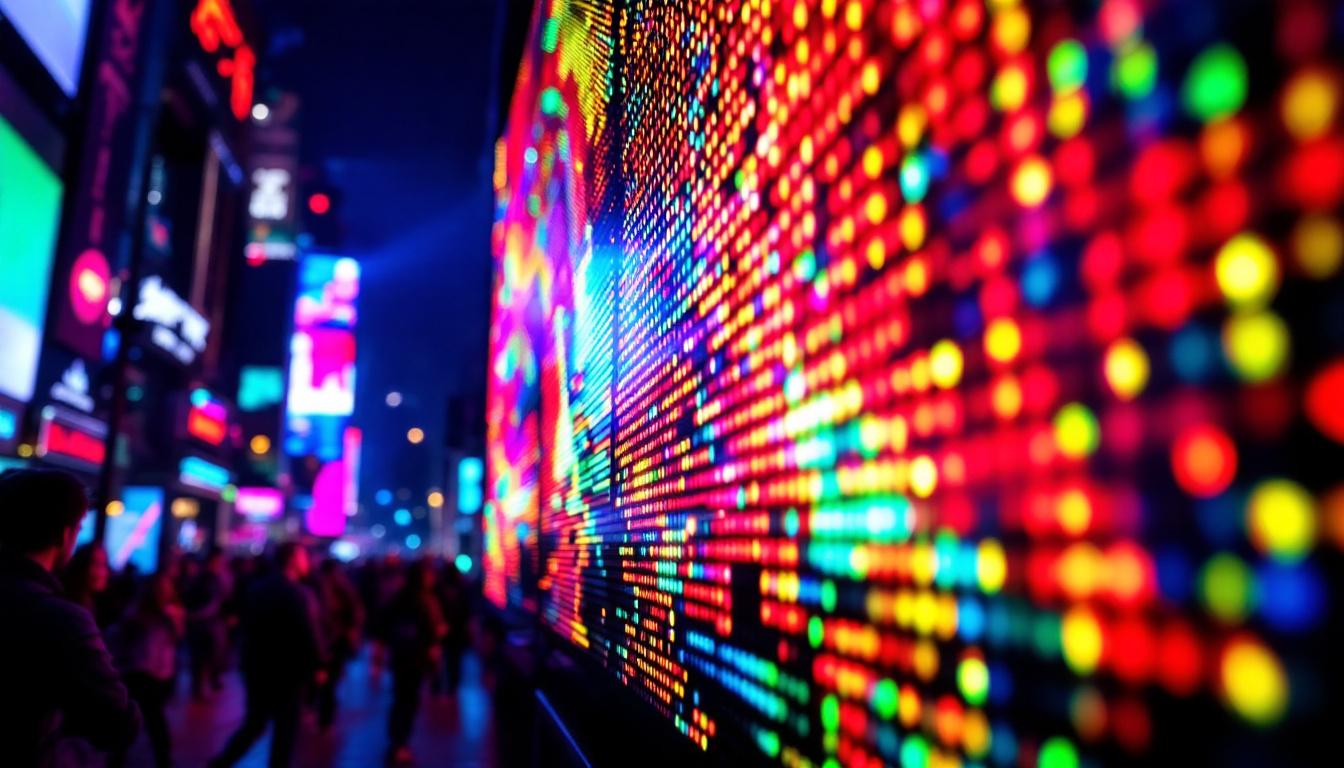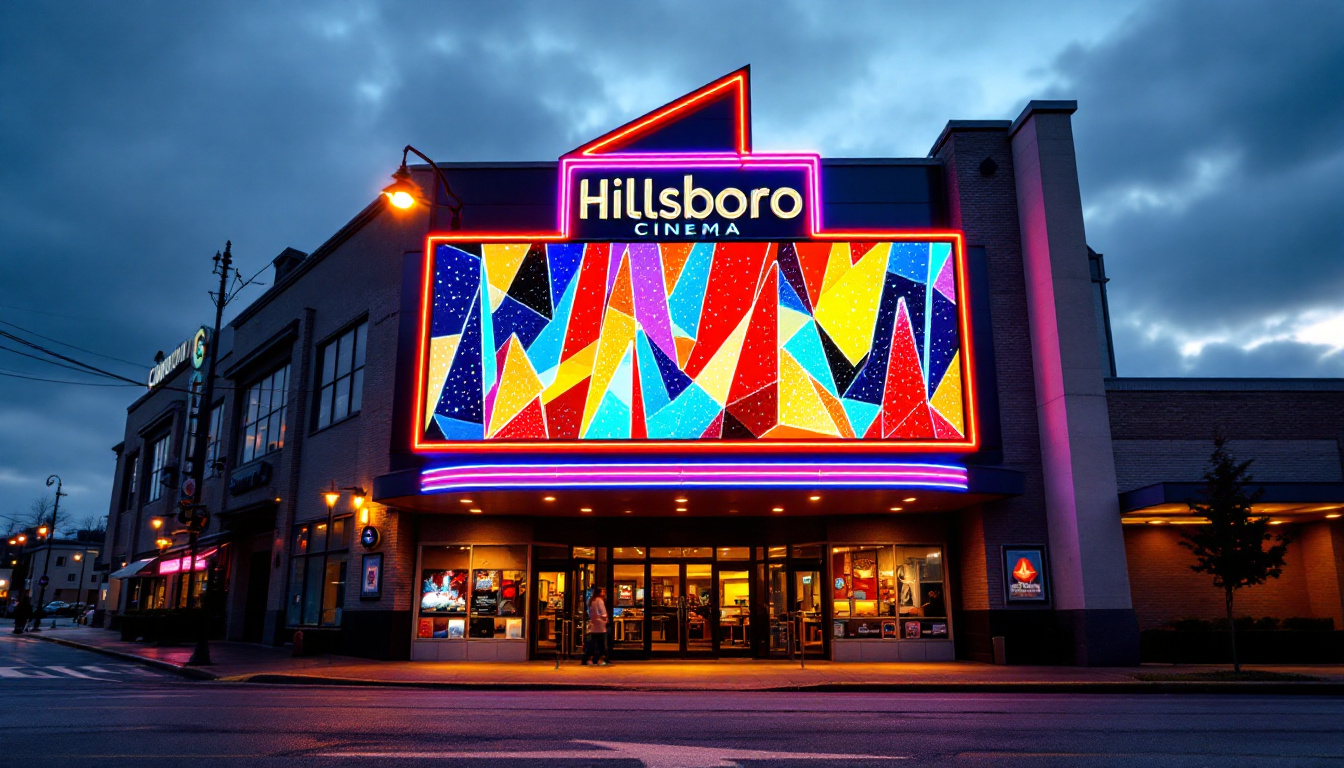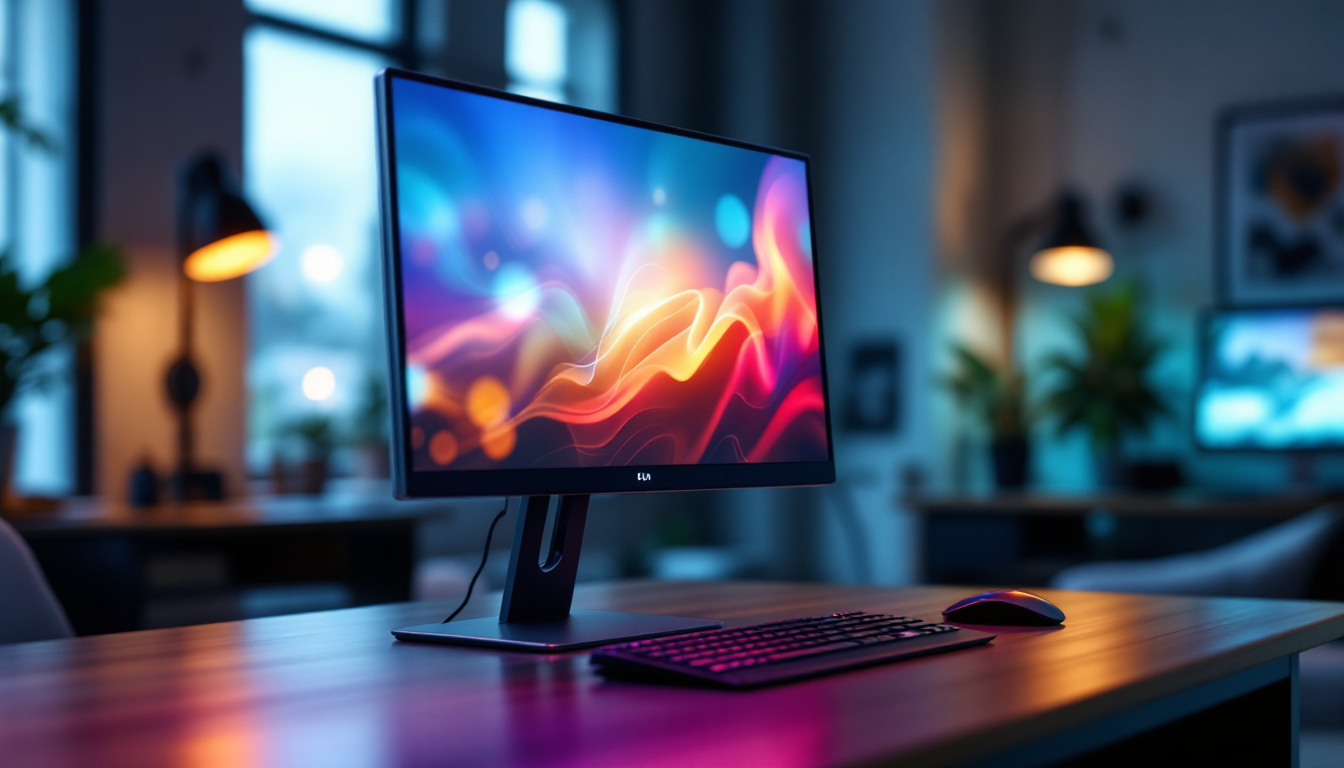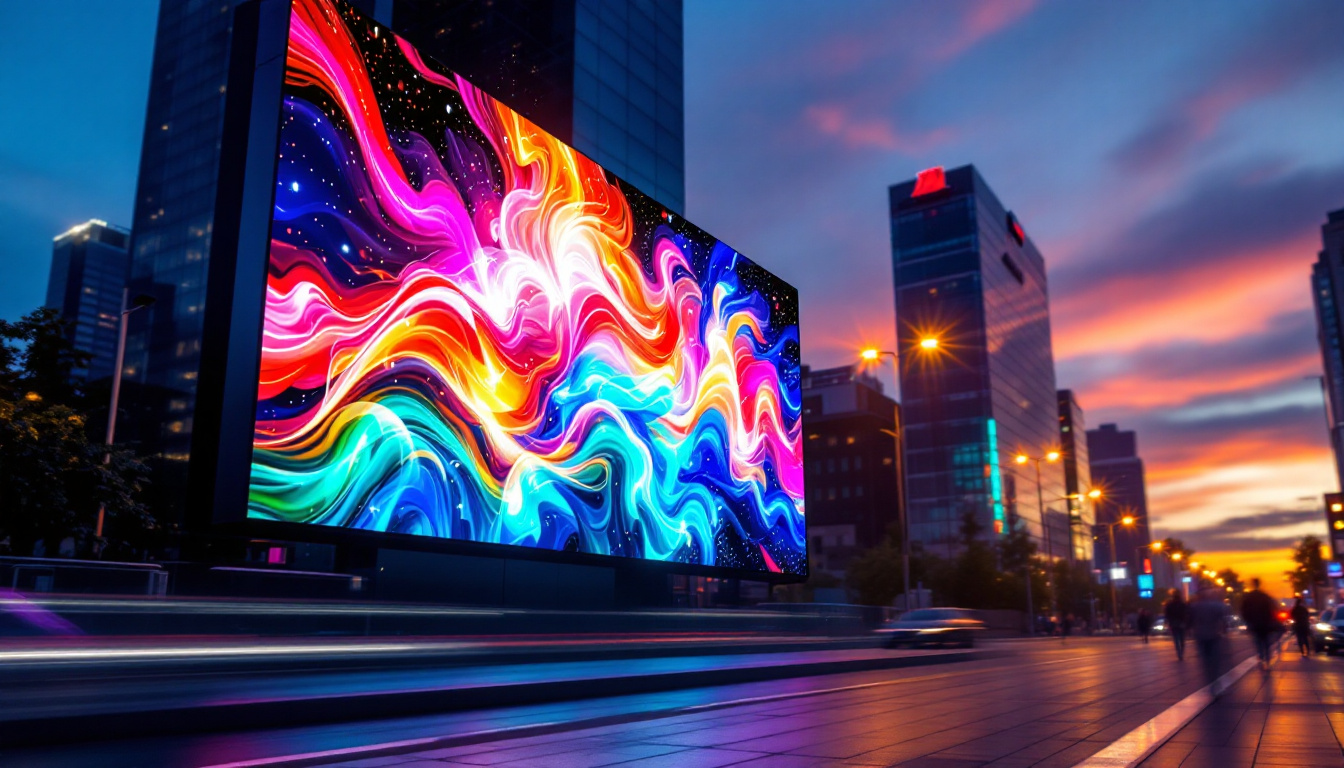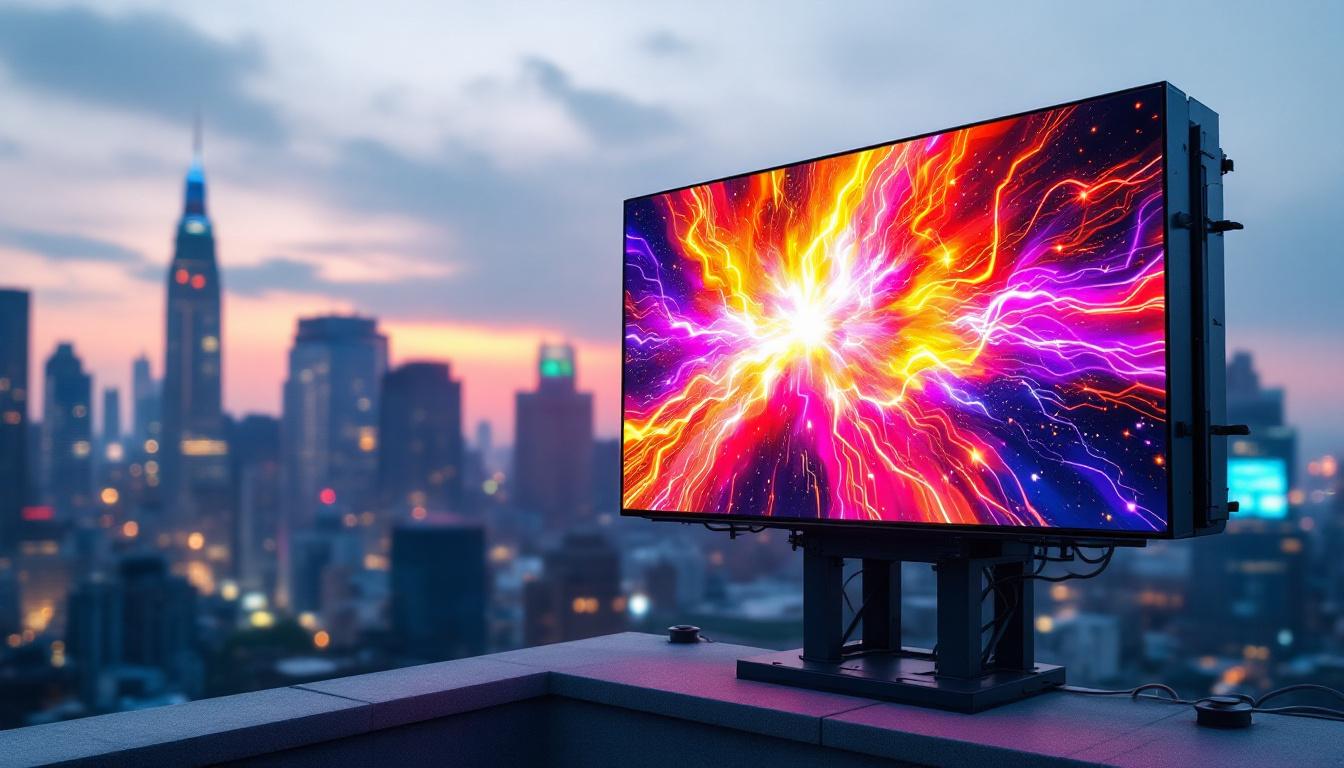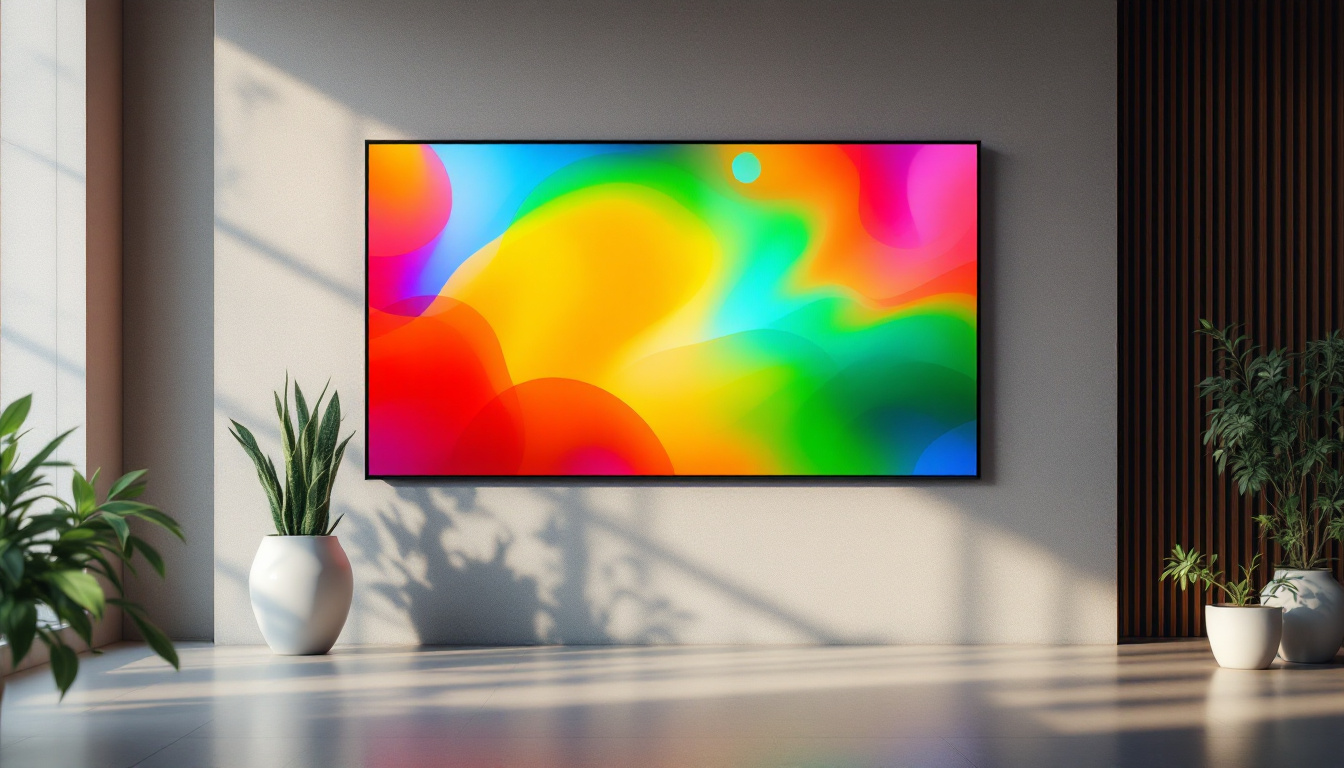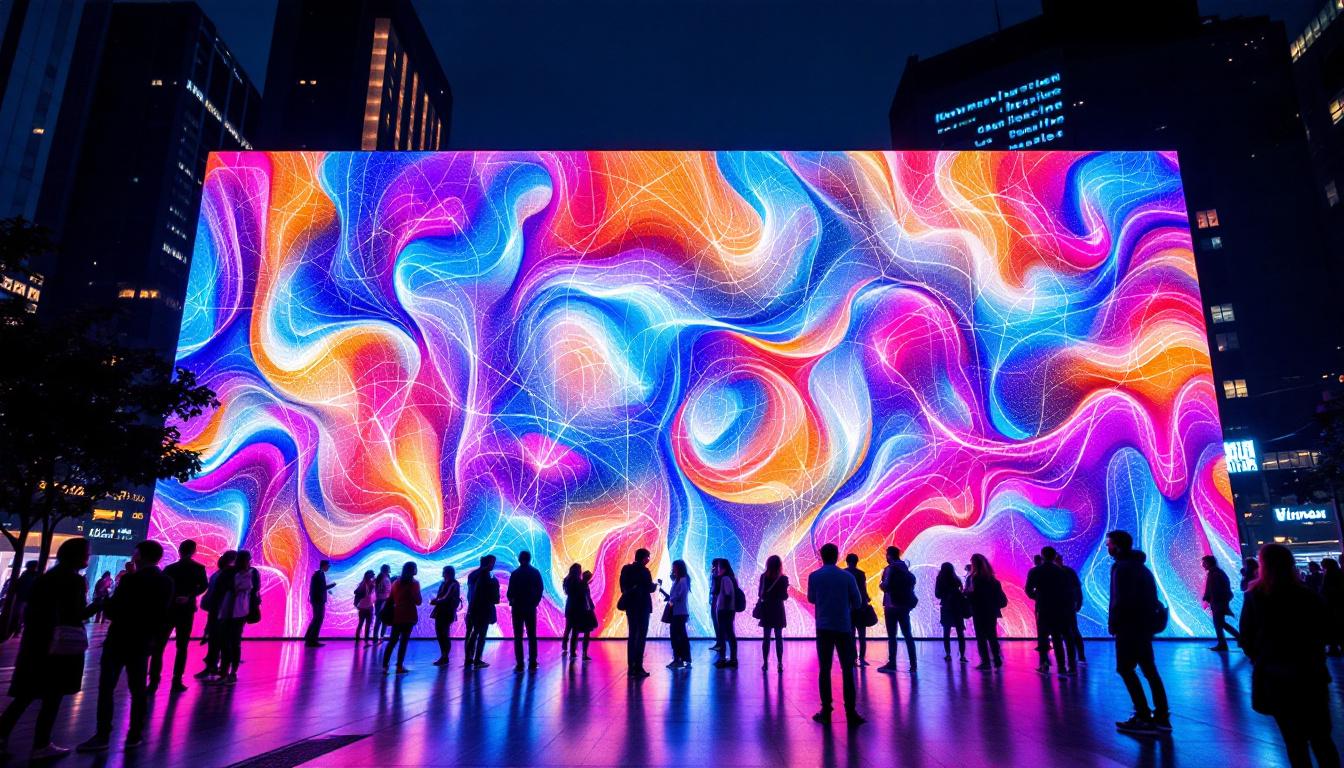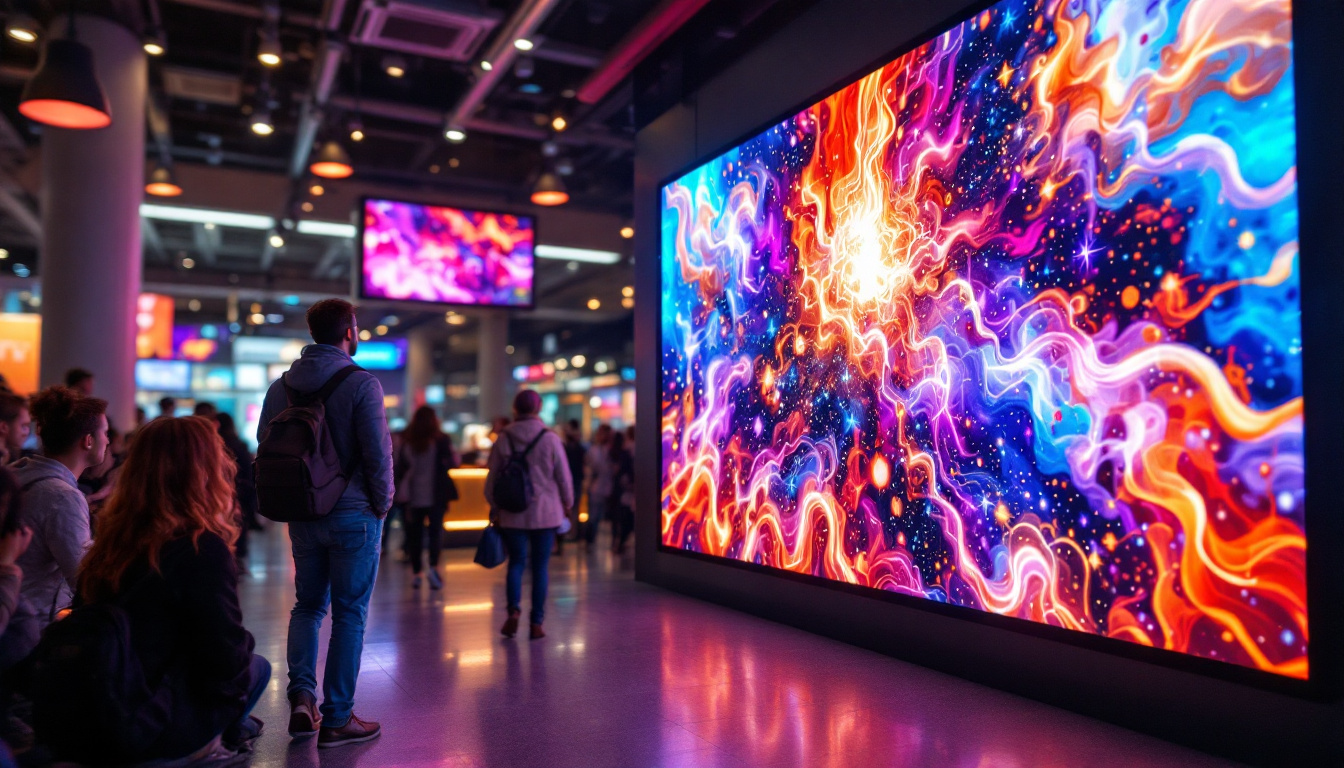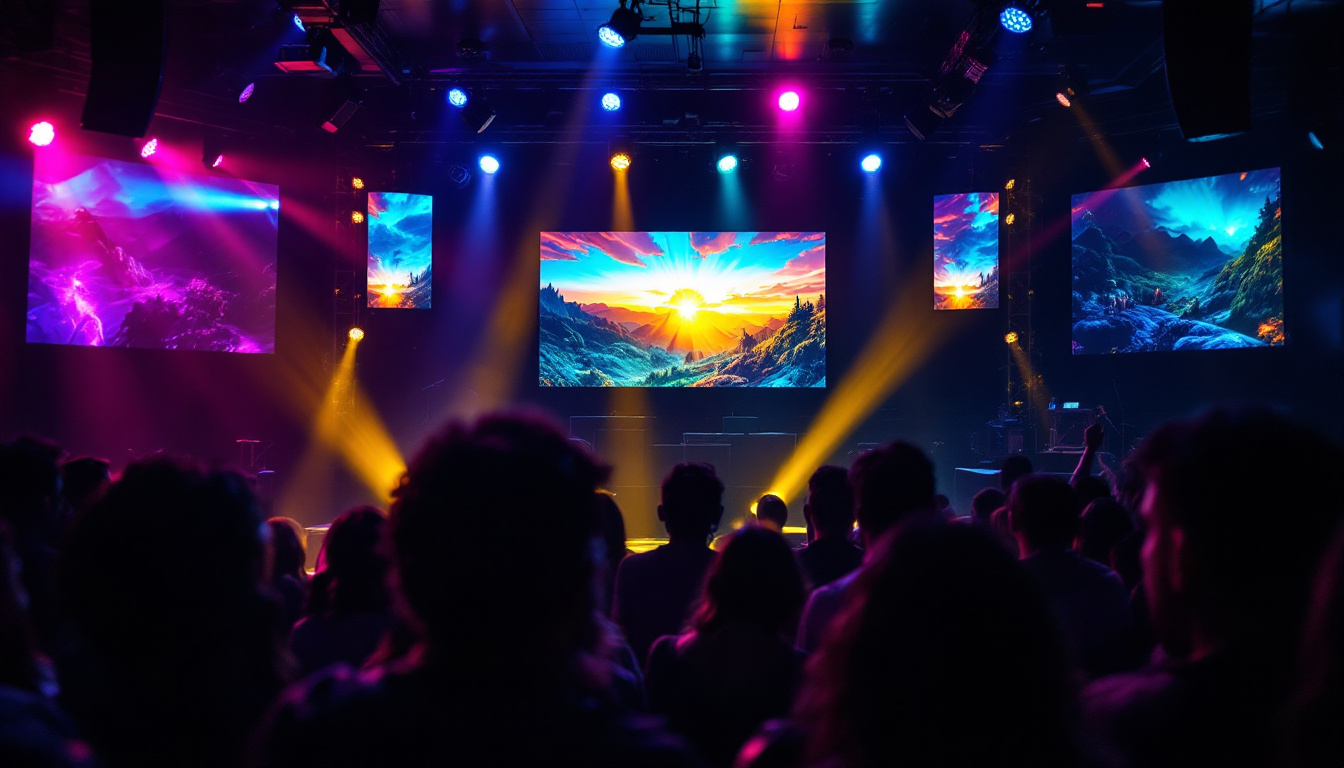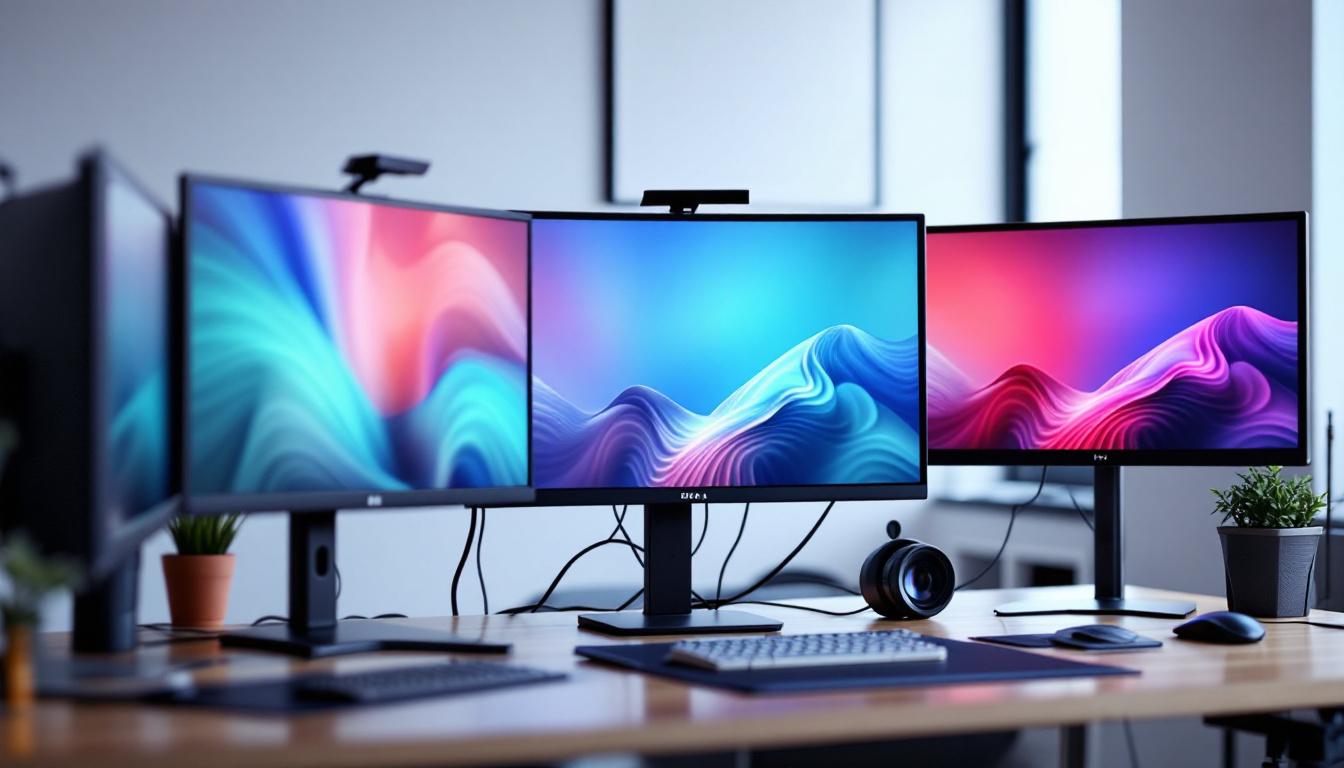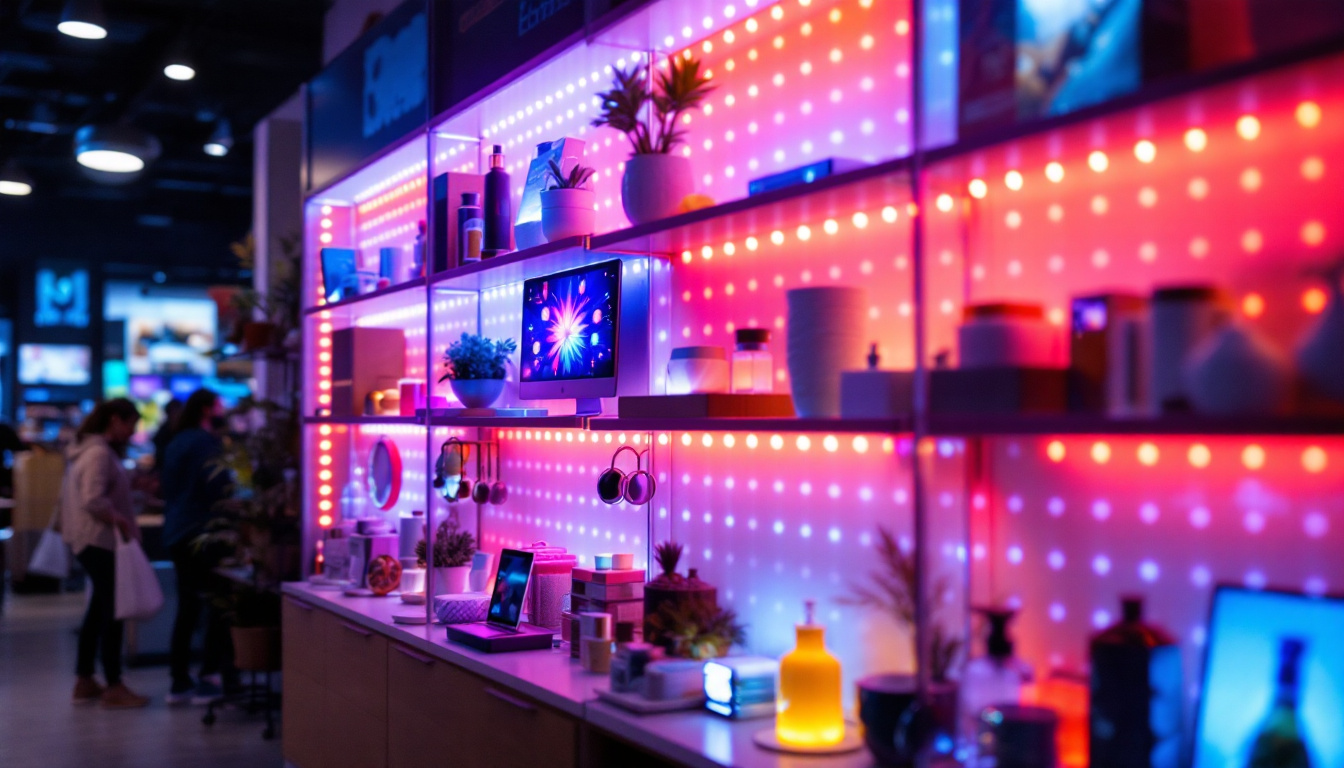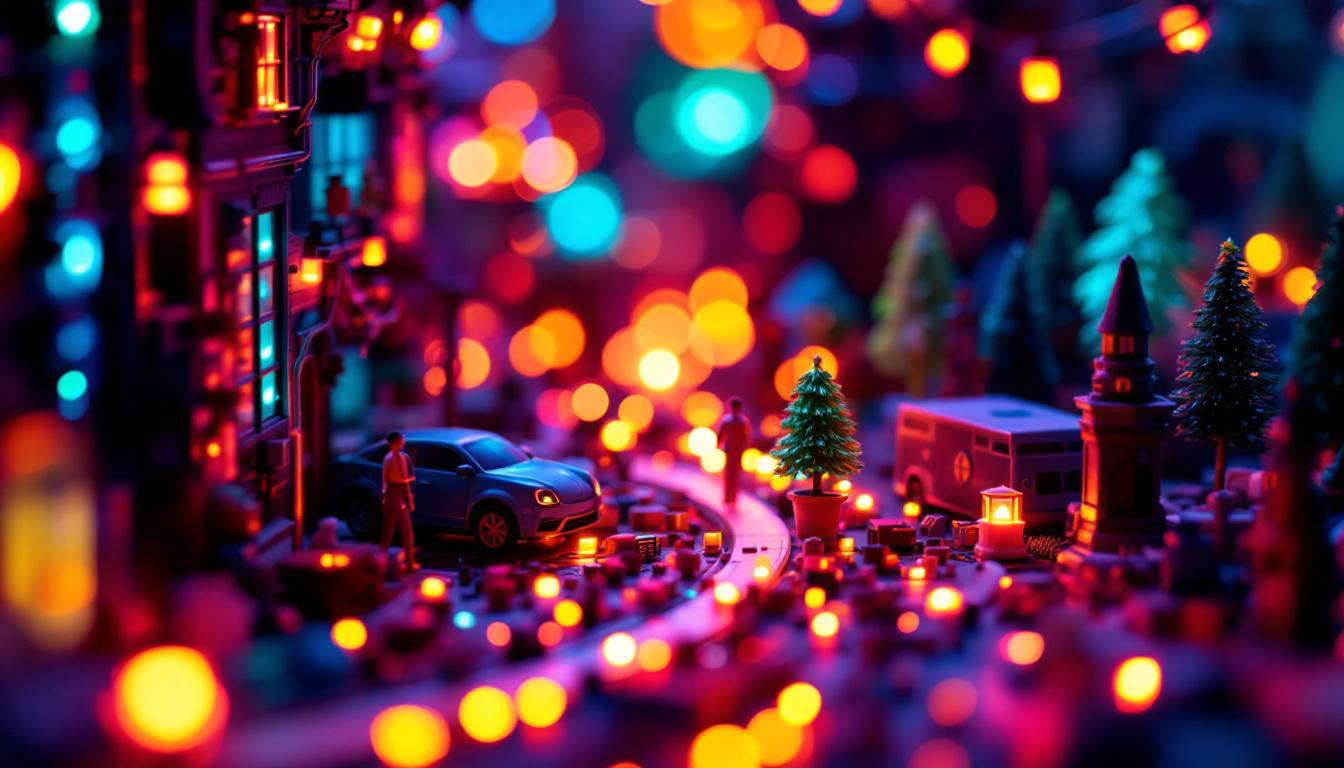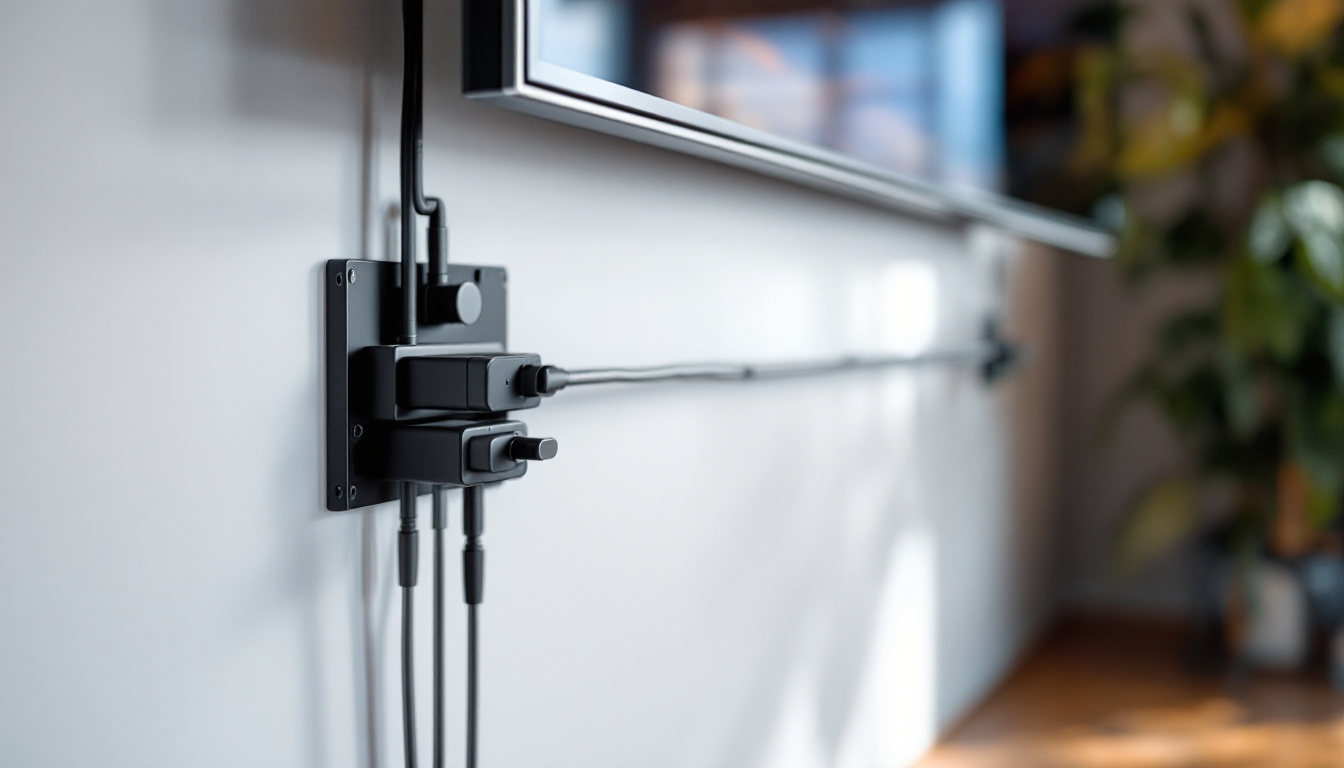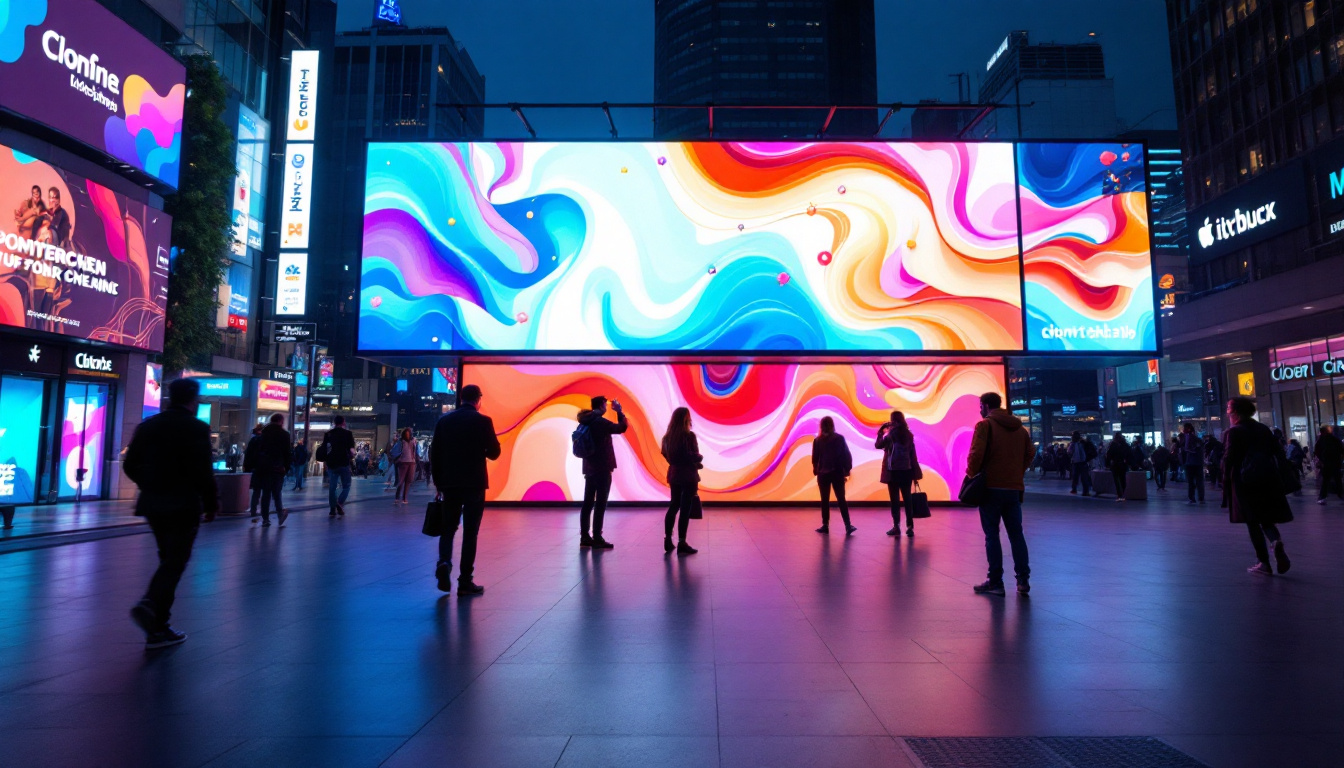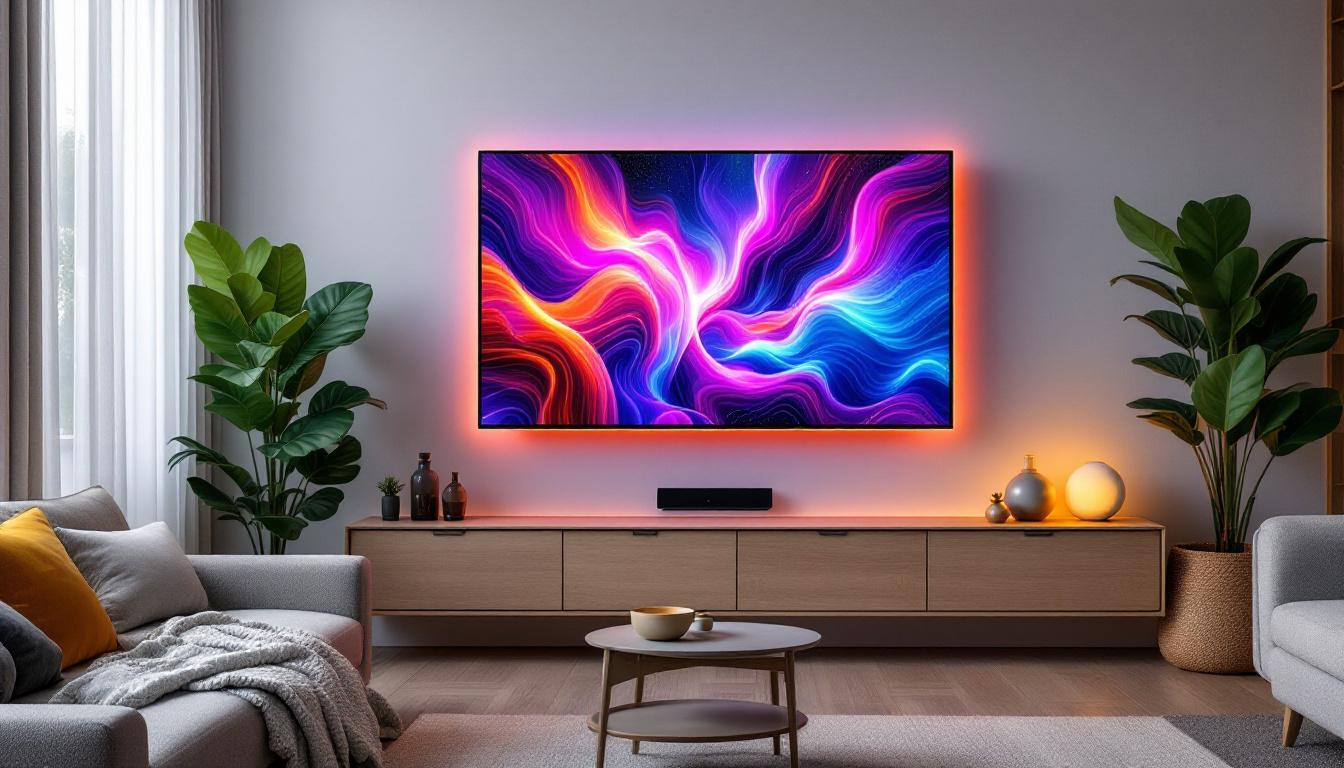In the realm of modern technology, the curved screen wall has emerged as a captivating innovation, particularly in the field of LED displays. These installations not only enhance visual experiences but also redefine the way information is presented in various environments. From retail spaces to corporate offices, the versatility of curved screen walls is revolutionizing how audiences engage with content.
Understanding Curved Screen Walls
Curved screen walls are composed of multiple LED panels that are strategically arranged to form a seamless, curved display. This design allows for a more immersive viewing experience compared to traditional flat screens. The curvature of the screen can vary, depending on the specific application and desired effect. By utilizing advanced technology, these displays can create stunning visuals that captivate audiences and enhance the overall atmosphere of a space.
Types of Curved LED Displays
There are several types of curved LED displays, each with unique characteristics suited for different applications. The most common types include:
- Concave Displays: These displays curve inward, creating a dome-like effect that draws viewers in. They are often used in retail environments to highlight products, making them appear more attractive and engaging to potential customers. The immersive nature of concave displays can also enhance the storytelling aspect of advertisements, allowing brands to connect with their audience on a deeper level.
- Convex Displays: Conversely, convex displays curve outward, providing a panoramic view that is ideal for large venues such as stadiums and auditoriums. These displays can showcase live events, sports games, or concerts, ensuring that attendees have a clear view of the action from various angles. The expansive nature of convex displays can also create a sense of unity among the audience, as everyone shares the same visual experience.
- Flexible LED Panels: These panels can be bent and shaped to fit various configurations, allowing for creative and customized installations. Flexible LED panels are particularly popular for unique architectural designs and artistic installations, as they can adapt to unconventional spaces and forms, pushing the boundaries of traditional display technology.
Each type of display serves a distinct purpose and can be tailored to meet the specific needs of the environment in which they are installed. With the rise of digital signage, the versatility of curved LED displays has opened up new avenues for creativity and innovation in visual communication.
Advantages of Curved Screen Walls
Curved screen walls offer numerous advantages that make them an appealing choice for businesses and organizations. Some of these benefits include:
- Enhanced Immersion: The curvature of the screen creates a more immersive experience, drawing viewers into the content and making it more engaging. This is particularly beneficial in environments such as museums or exhibitions, where storytelling and emotional connection are paramount.
- Improved Visibility: Curved displays can be viewed from a wider range of angles, ensuring that more people can see the content clearly, regardless of their position in the room. This feature is especially advantageous in crowded spaces, where traditional flat screens may leave some viewers struggling to see the display.
- creative flexibility: The ability to customize the shape and size of the display allows for innovative designs that can fit seamlessly into any environment. This flexibility enables designers to integrate technology with architecture, creating stunning focal points that enhance the aesthetic appeal of a space.
These advantages contribute to the growing popularity of curved screen walls in various sectors, including entertainment, advertising, and corporate communication. As technology continues to evolve, the potential applications for curved displays are expanding, leading to even more exciting possibilities for immersive experiences in public spaces, retail environments, and beyond. Furthermore, the integration of interactive elements with curved displays can elevate engagement levels, allowing audiences to not only observe but also participate in the experience, transforming passive viewing into active involvement.
Applications of Curved Screen Walls
Curved screen walls have found applications in a wide range of industries, showcasing their versatility and effectiveness in enhancing visual communication.
Retail and Advertising
In retail environments, curved screen walls serve as eye-catching displays that attract customers and promote products. The dynamic nature of LED technology allows for vibrant colors and high-resolution images, making products stand out. Retailers can use these displays to showcase advertisements, promotional content, or even interactive experiences that engage customers directly. Furthermore, the curvature of the screens can create a more immersive shopping experience, guiding customers through the store and encouraging them to explore various products. By integrating augmented reality features, retailers can also allow customers to visualize products in their own environment, further enhancing the shopping experience and driving sales.
Corporate Settings
In corporate settings, curved screen walls can be utilized for presentations, conferences, and training sessions. The immersive experience they provide can enhance communication and collaboration among team members. Additionally, they can be used to display data visualizations, making complex information more accessible and easier to understand. These screens can also facilitate remote collaboration by integrating video conferencing tools, allowing teams from different locations to engage in real-time discussions. The ability to present multiple data sources simultaneously on a curved display can lead to more informed decision-making, as participants can visualize trends and insights in a cohesive manner, ultimately fostering a more innovative workplace culture.
Entertainment Venues
Entertainment venues, such as theaters and concert halls, have also embraced curved screen walls. These installations can enhance the audience’s experience by creating a more immersive environment for performances. Whether it’s a concert, a play, or an art installation, curved displays can transform the way content is presented, captivating audiences and leaving a lasting impression. The curvature of the screens allows for a wider field of view, ensuring that every audience member, regardless of their seat location, can enjoy a premium visual experience. Additionally, the integration of synchronized audio-visual elements can elevate the overall production quality, making events not just performances, but unforgettable experiences that resonate with attendees long after the final curtain call.
Technical Aspects of Curved LED Displays
Understanding the technical aspects of curved LED displays is essential for making informed decisions about their implementation. Key factors include resolution, brightness, and refresh rate.
Resolution and Image Quality
The resolution of a curved LED display is crucial for delivering high-quality images. Higher resolutions result in sharper images and more detailed visuals. When selecting a curved screen wall, it is important to consider the pixel pitch, which refers to the distance between pixels. A smaller pixel pitch typically results in better image quality, especially for close-up viewing.
Brightness and Color Accuracy
Brightness is another critical factor that affects the performance of curved LED displays. Displays should be bright enough to be viewed in various lighting conditions, whether in a dimly lit room or a brightly lit environment. Additionally, color accuracy plays a significant role in ensuring that the displayed content appears vibrant and true to life.
Refresh Rate and Motion Handling
The refresh rate of a display determines how smoothly motion is rendered. A higher refresh rate is essential for applications involving fast-moving content, such as sports broadcasts or video games. Curved LED displays with higher refresh rates can provide a more fluid viewing experience, minimizing motion blur and enhancing overall visual quality.
Installation Considerations
Installing a curved screen wall requires careful planning and consideration of various factors to ensure optimal performance and aesthetics.
Space and Layout
The available space and layout of the installation area play a significant role in determining the size and curvature of the display. It is essential to assess the environment to ensure that the display fits seamlessly within the space while providing the intended visual impact.
Mounting Solutions
Choosing the right mounting solution is crucial for the stability and safety of the curved screen wall. Various mounting options are available, including wall mounts, floor stands, and custom structures. The chosen solution should accommodate the weight and dimensions of the display while allowing for easy access for maintenance and adjustments.
Calibration and Maintenance
Once installed, regular calibration and maintenance are necessary to ensure optimal performance. This includes adjusting brightness, color settings, and ensuring that all components are functioning correctly. Regular maintenance can extend the lifespan of the display and maintain image quality over time.
Future Trends in Curved Screen Technology
The technology behind curved screen walls continues to evolve, with several trends emerging that promise to enhance their capabilities and applications.
Advancements in Flexible Displays
Flexible LED panels are becoming increasingly sophisticated, allowing for even more creative installations. These advancements enable designers to create unique shapes and configurations that were previously impossible, expanding the possibilities for curved screen walls in various environments.
Integration with Augmented Reality
The integration of augmented reality (AR) with curved screen walls is another exciting trend. By combining AR technology with immersive displays, businesses can create interactive experiences that engage audiences in new and innovative ways. This integration can be particularly effective in retail and entertainment settings, where audience engagement is paramount.
Enhanced Connectivity and Smart Features
As technology advances, curved screen walls are becoming smarter and more connected. Enhanced connectivity options, such as wireless streaming and integration with smart devices, allow for seamless content sharing and management. These features can streamline the user experience and make it easier to update content in real-time.
Conclusion
Curved screen walls represent a significant advancement in LED display technology, offering unique benefits that enhance visual communication across various industries. Their immersive nature, combined with the ability to customize design and content, makes them a powerful tool for engaging audiences.
As technology continues to evolve, the potential applications for curved screen walls will only expand, paving the way for more innovative and interactive experiences. Whether in retail, corporate settings, or entertainment venues, the impact of curved screen walls is undeniable, making them an essential consideration for businesses looking to elevate their visual communication strategies.
Discover the Future of Visual Engagement with LumenMatrix
Ready to transform your space with the immersive power of curved screen walls? LumenMatrix is at the forefront of LED display innovation, offering a wide array of solutions that bring your visual communication to life. From captivating Indoor and Outdoor LED Wall Displays to dynamic Vehicle and Sports Displays, our technology is designed to captivate and engage. Experience the revolution in digital signage with our Custom, All-in-One, and Transparent LED displays, each tailored to meet your unique needs. Check out LumenMatrix LED Display Solutions today and see how we can help you make a lasting impression with clarity and impact.

